Field Report: The Virginia Museum of Transportation
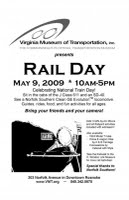
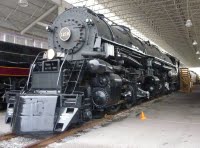
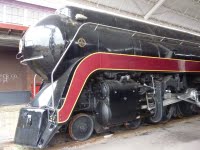 Click on each image for a closer look!
Click on each image for a closer look!.
Last October, I had the opportunity to visit the Virginia Museum of Transportation in an ongoing quest to learn from other museums as we plan for the development of the Toronto Railway Heritage Centre.
.
This museum first opened its doors in 1963 in Wasena Park along the Roanoke River. However, disaster struck the Museum in 1985, when floodwaters surged through the Museum leaving behind $1.4 million in damages. The Norfolk Southern Railway came to the rescue, generously donating a 1918 vintage Norfolk and Western (N&W) freight station to be used as the Museum's new home. The Museum is now housed in a 45,000 square foot building adjacent to active Norfolk Southern mainline tracks on 5.75 acres of land in downtown Roanoke.
.
The image at the upper left is of a poster promoting a "Rail Day" at the museum, an idea which we too could pursue. The museum has an interesting collection of equipment which is listed on their website here. While there are several steam locomotives in the museum's collection, two stand out as they were the pride of the N&W.
.
The N&W J Class 4-8-4 streamlined passenger steam locomotive #611 pictured above was claimed to be the most advanced steam locomotive ever built. The J's were built and designed completely by N&W employees, something that was uncommon on American railroads. Only 14 were ever built. This is the only surviving engine. It was restored to operating condition in 1981 and used in excursion service until 1994.
.
The second locomotive picture above is the N&W A Class 2-6-6-4 #1218 articulated engine used to do the main freight purpose of the N&W - hauling coal. It too was restored and operated in excursion service from 1987 to 1992.
.
In the remaining pictures shown here, we find one of the ubiquitous "video-based" diesel train simulators found in many museums. These have become obsolete to the needs of most railways and many have found homes in museums. The other odd locomotive shown below is an electric locomotive used by the Panama Canal to tow ships through the locks. Finally I found an intriguing poster advertising an event at the museum preceding Halloween. I was unable to find out what sort of terror was to be instilled in visitors to the event!
.
The museum is called a transportation museum because they also have a small collection of primarily automobiles and other wheeled vehicles. There is another railway museum located very close to this one that is intriguingly different. That will be the subject of another upcoming news posting.
.
Posting and Pictures by Russ Milland
.
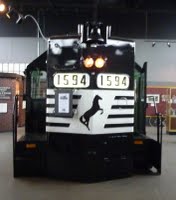
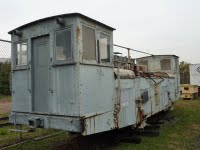
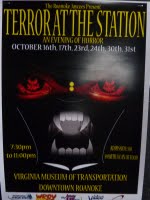






<< Home